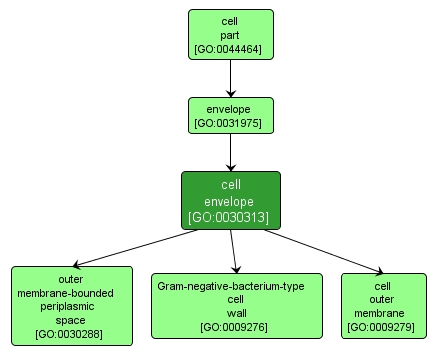GO TERM SUMMARY
|
| Name: |
cell envelope |
| Acc: |
GO:0030313 |
| Aspect: |
Cellular Component |
| Desc: |
An envelope that surrounds a bacterial cell and includes the cytoplasmic membrane and everything external, encompassing the periplasmic space, cell wall, and outer membrane if present. |
|

|
INTERACTIVE GO GRAPH
|














